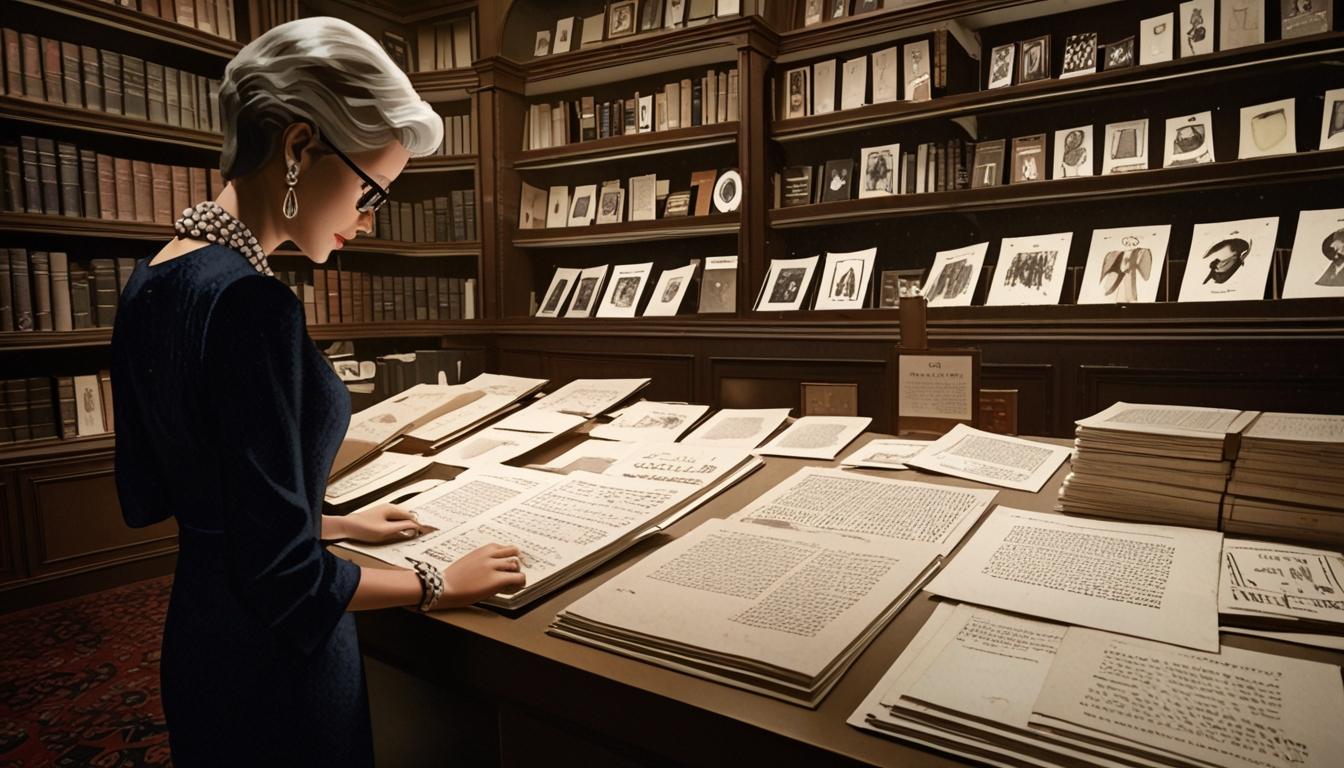Curator Anne Peterson highlights the rich history and impact of Stanley Marcus through a vast collection of artifacts at Southern Methodist University.
At Southern Methodist University’s DeGolyer Library in Dallas, curator Anne Peterson oversees a significant collection of historical artifacts, including an extensive array of papers belonging to Stanley Marcus, the iconic figure behind the Neiman Marcus department store. This collection reflects the rich legacy of Neiman Marcus within the fashion industry and the broader retail landscape.
Peterson, who holds the position of curator of photographs, describes the library as “like a museum with books,” emphasizing the diverse and rare collections that include materials spanning several decades and even centuries. Among these treasures, the Stanley Marcus papers stand out, containing over 400 boxes filled with unique documents, photographs, advertisements, and correspondence that illustrate Marcus’s profound impact on retailing and marketing.
“He was ahead of his time. He was the brilliance of the family,” Peterson stated, highlighting Marcus’s innovative strategies that helped transform Neiman Marcus into a globally recognized brand. Since its founding, the department store has become synonymous with high-end fashion, establishing itself as a prominent feature of Dallas.
The flagship Neiman Marcus store, an architectural landmark established in 1907, has served as a prominent attraction for luxury shoppers and fashion enthusiasts alike. The neo-classical building, situated downtown, was renowned for hosting fashion shows long before such events became commonplace in the retail world. Notable fashion icons including Coco Chanel, Sophia Loren, and Yves Saint Laurent interacted with the store and its founder, creating a legacy that is documented within the library’s collections.
However, as retail dynamics shift, the implications of the flagship store’s recent decline represent a significant moment in the industry. Ethan Lascity, a professor of fashion media, notes, “Downtown department stores are becoming a thing of the past.” The evolution of Dallas from a city historically centered on cotton and oil to a recognized fashion hub is, in part, attributed to the influential role of Neiman Marcus in fashion promotion.
For many, Neiman Marcus represented more than just a shopping destination; it was a place steeped in family tradition and community engagement, marking the closing of its flagship store as a notable chapter in the history of retail both locally and nationally.
Source: Noah Wire Services





Thanks. I enjoy this.
casino en ligne
You actually suggested it superbly!
casino en ligne
Cheers! I enjoy this!
casino en ligne France
Useful material Many thanks.
casino en ligne francais
Thanks, Numerous write ups!
casino en ligne fiable
This is nicely put. !
casino en ligne francais
Thanks, Numerous material!
casino en ligne fiable
Kudos. Good information!
casino en ligne francais
Good info. Kudos.
casino en ligne
Cheers! Valuable information!
casino en ligne francais